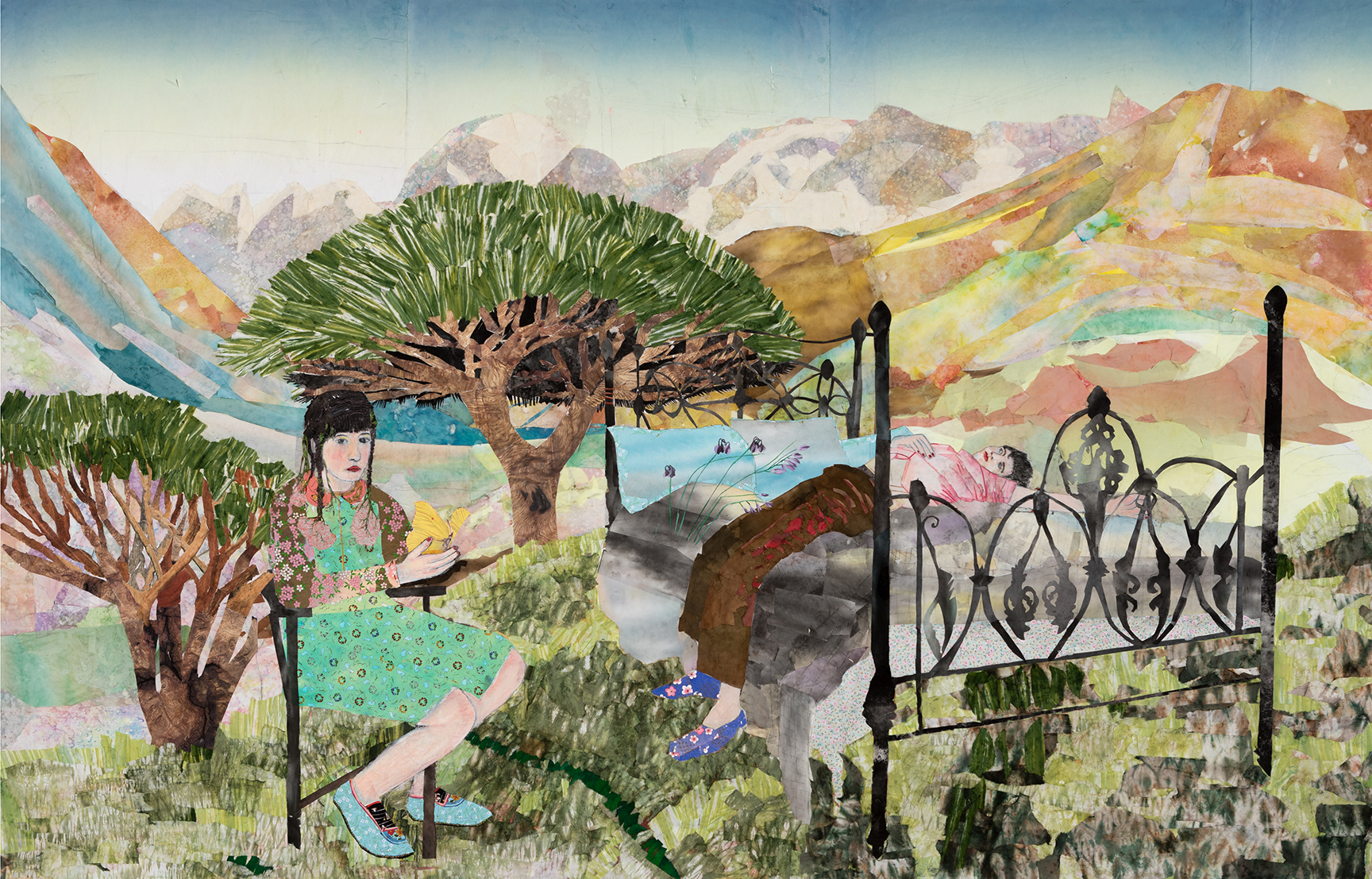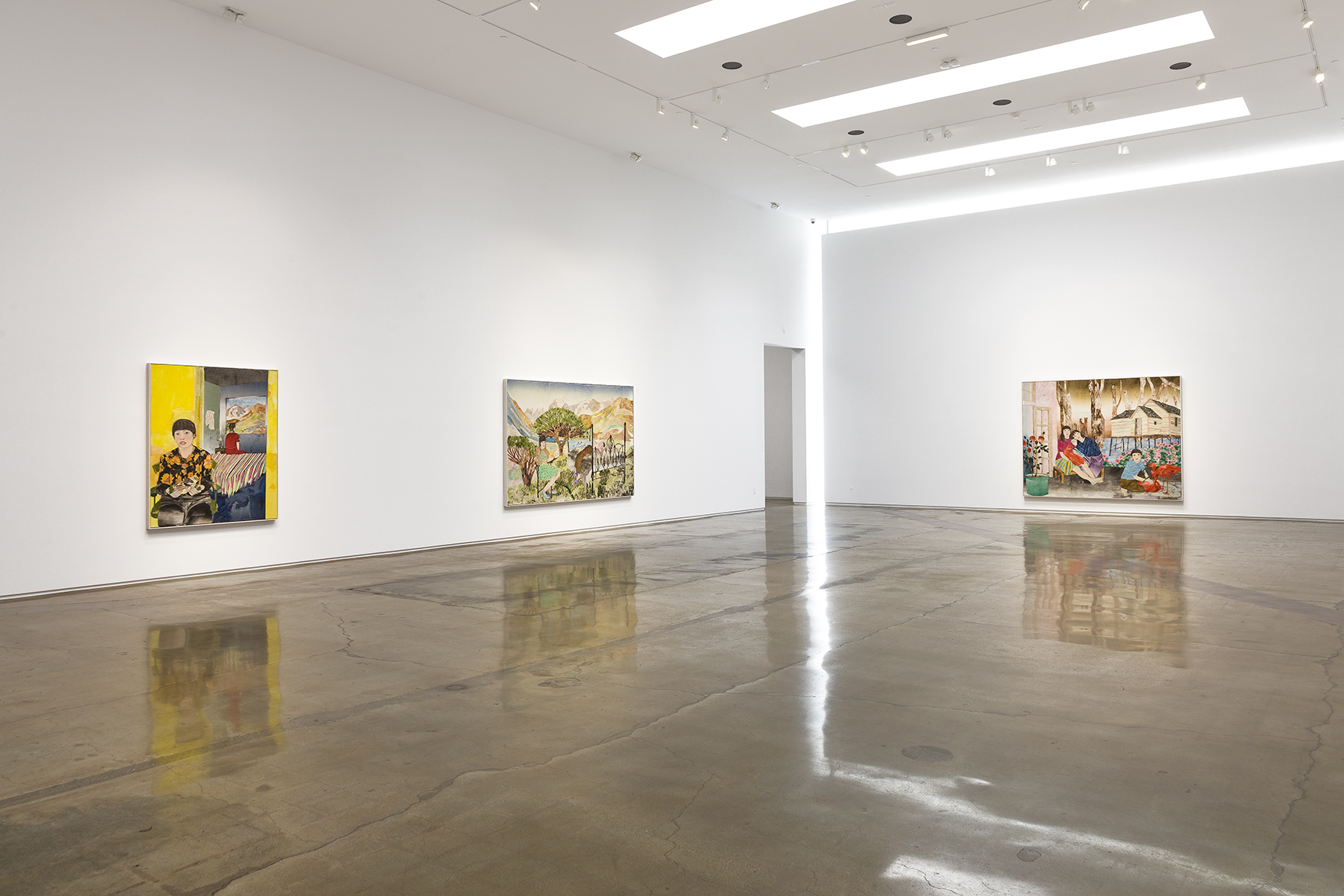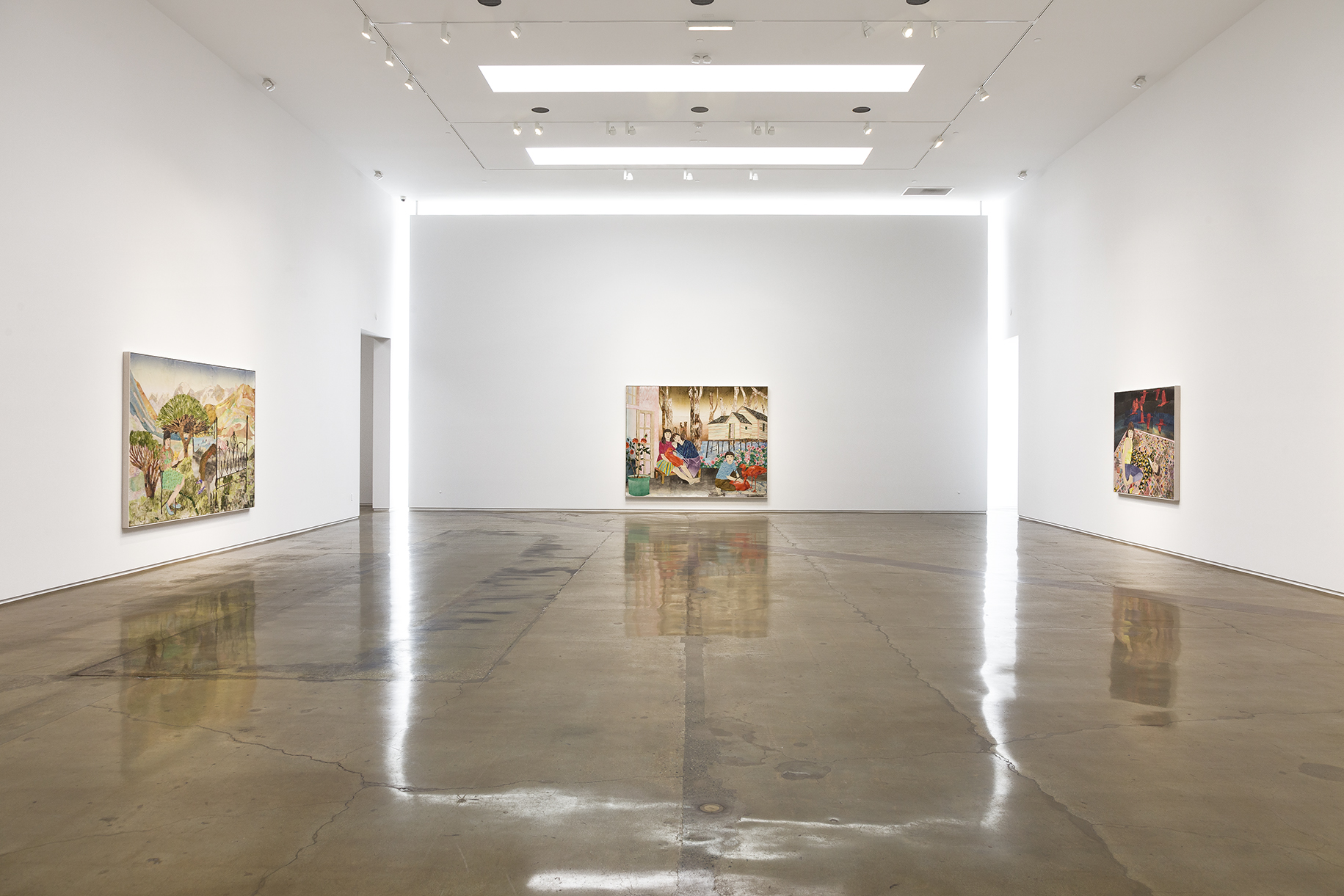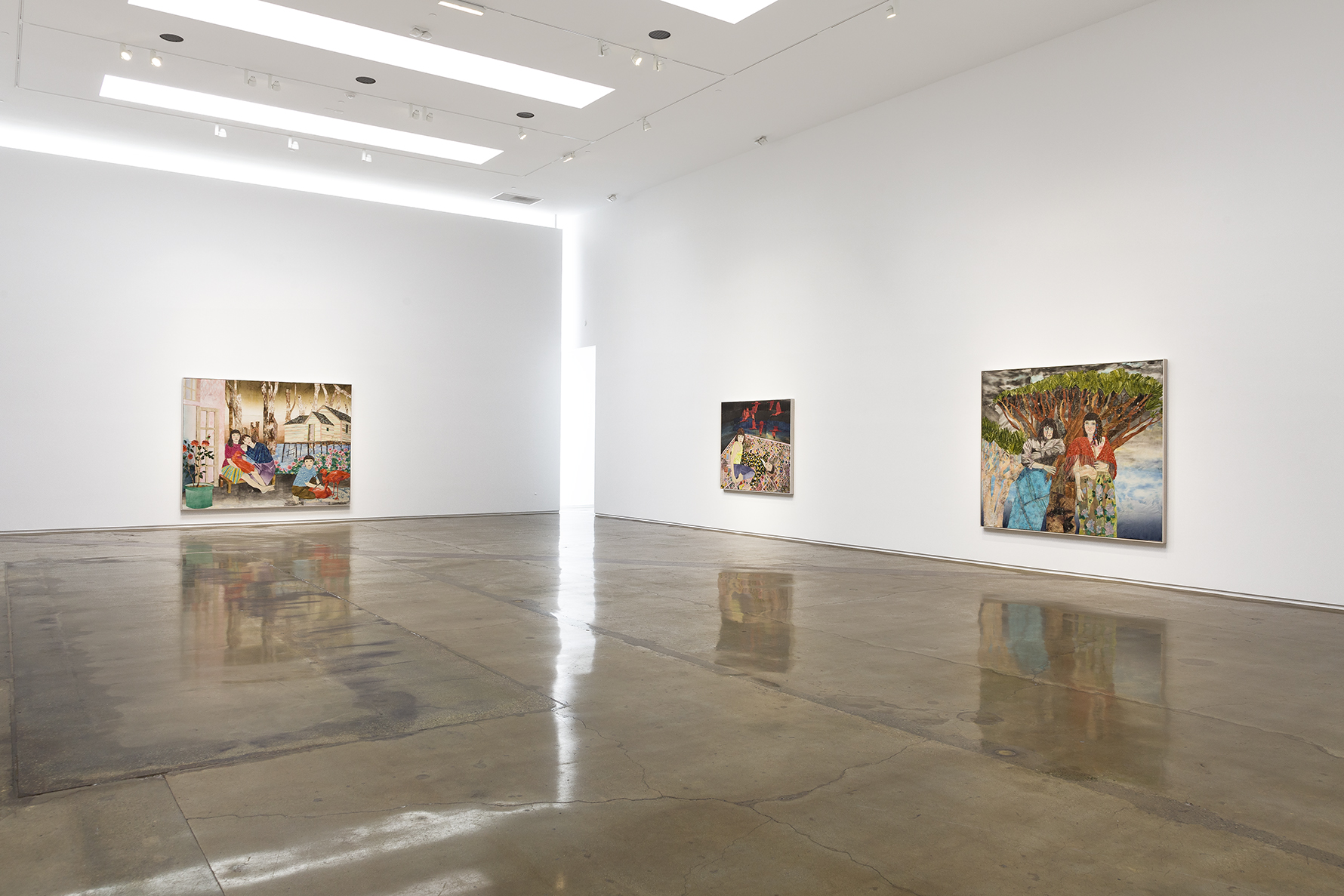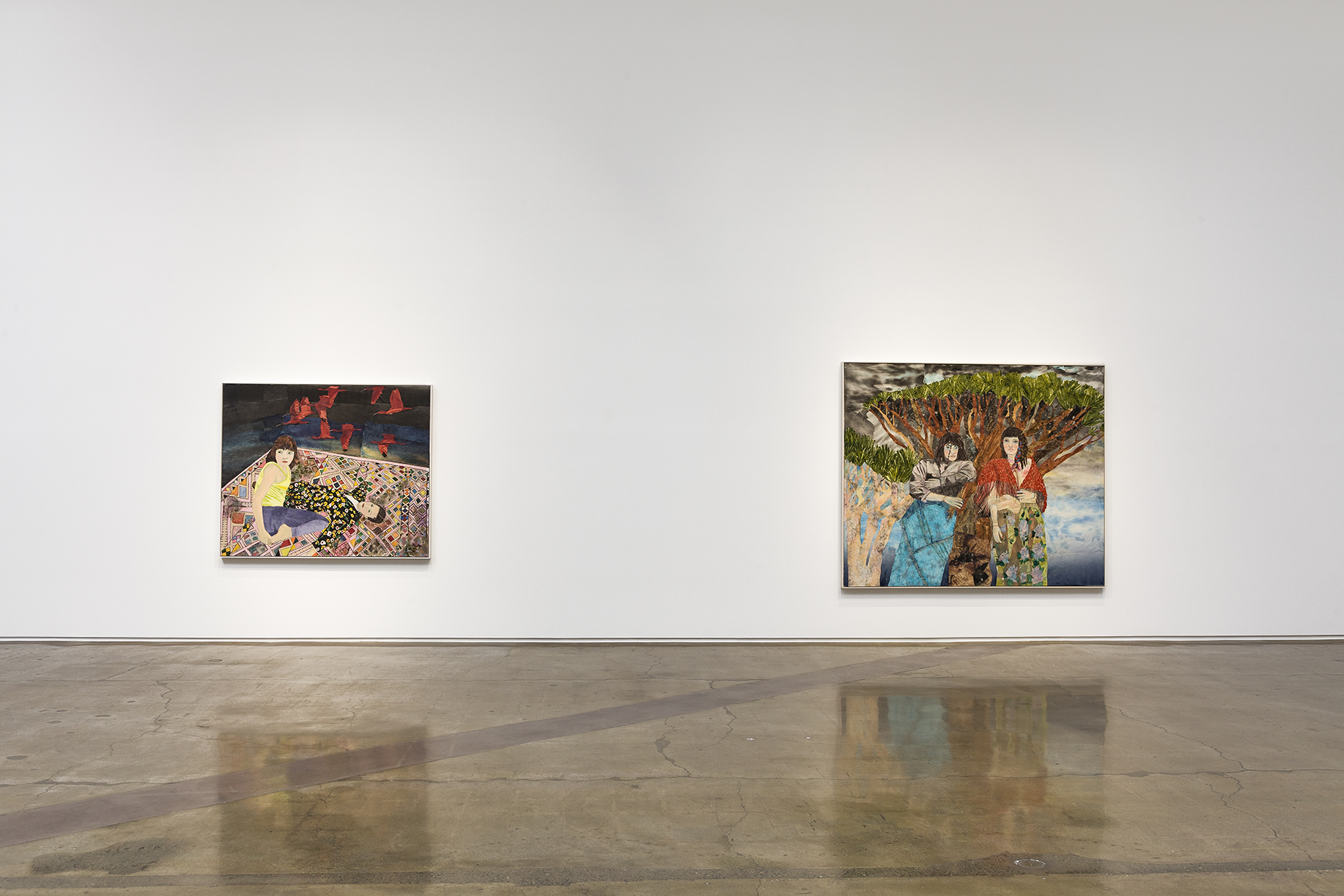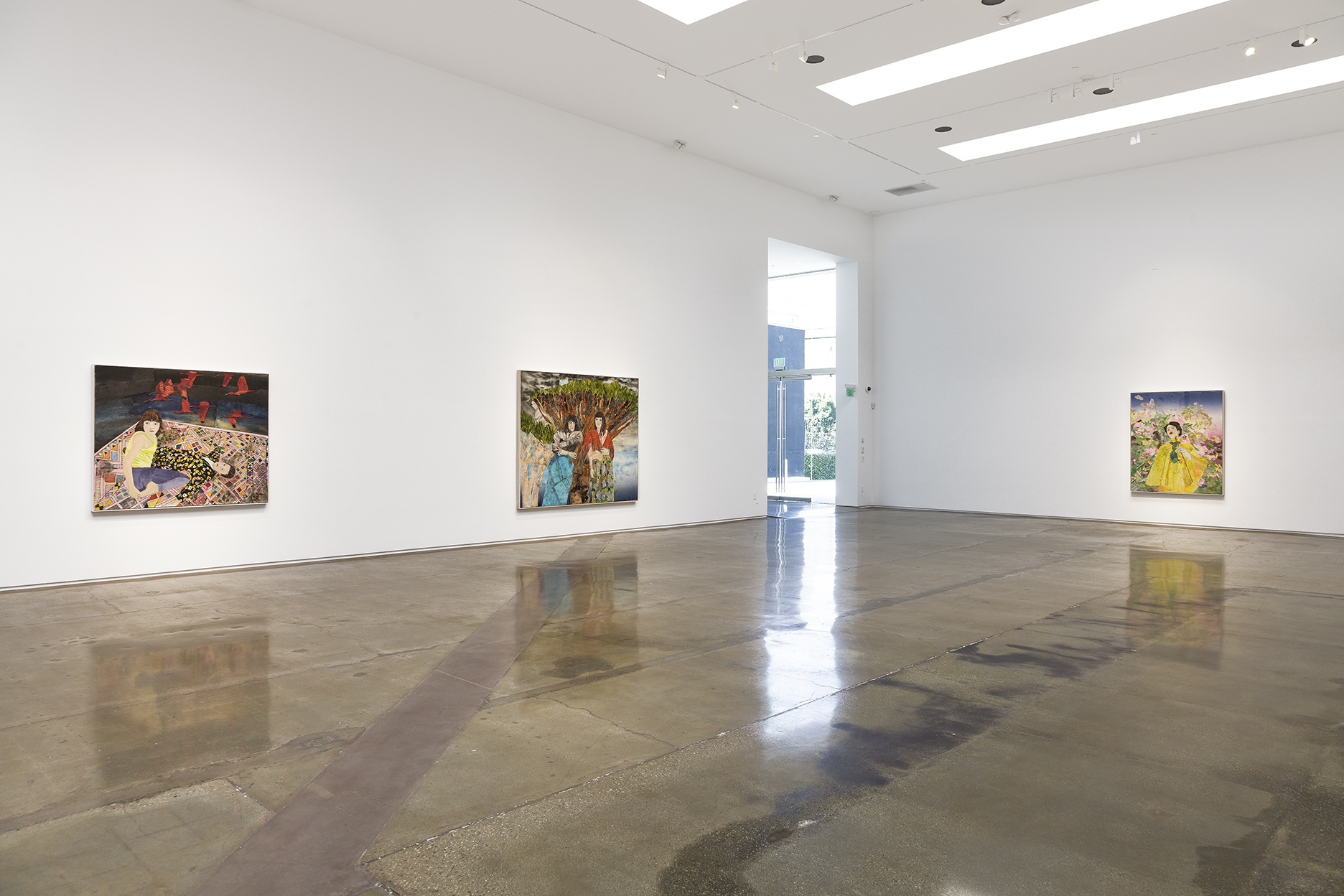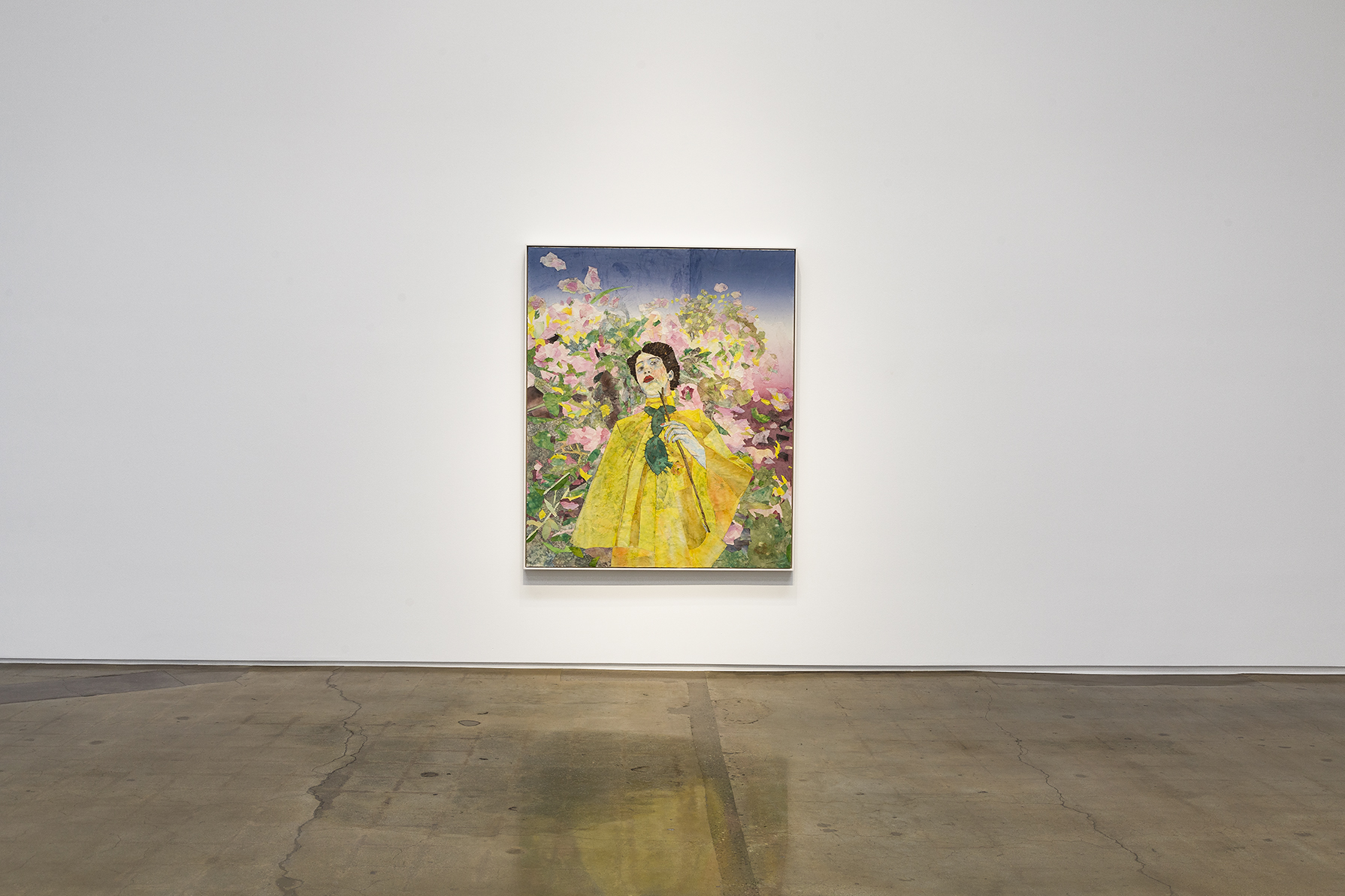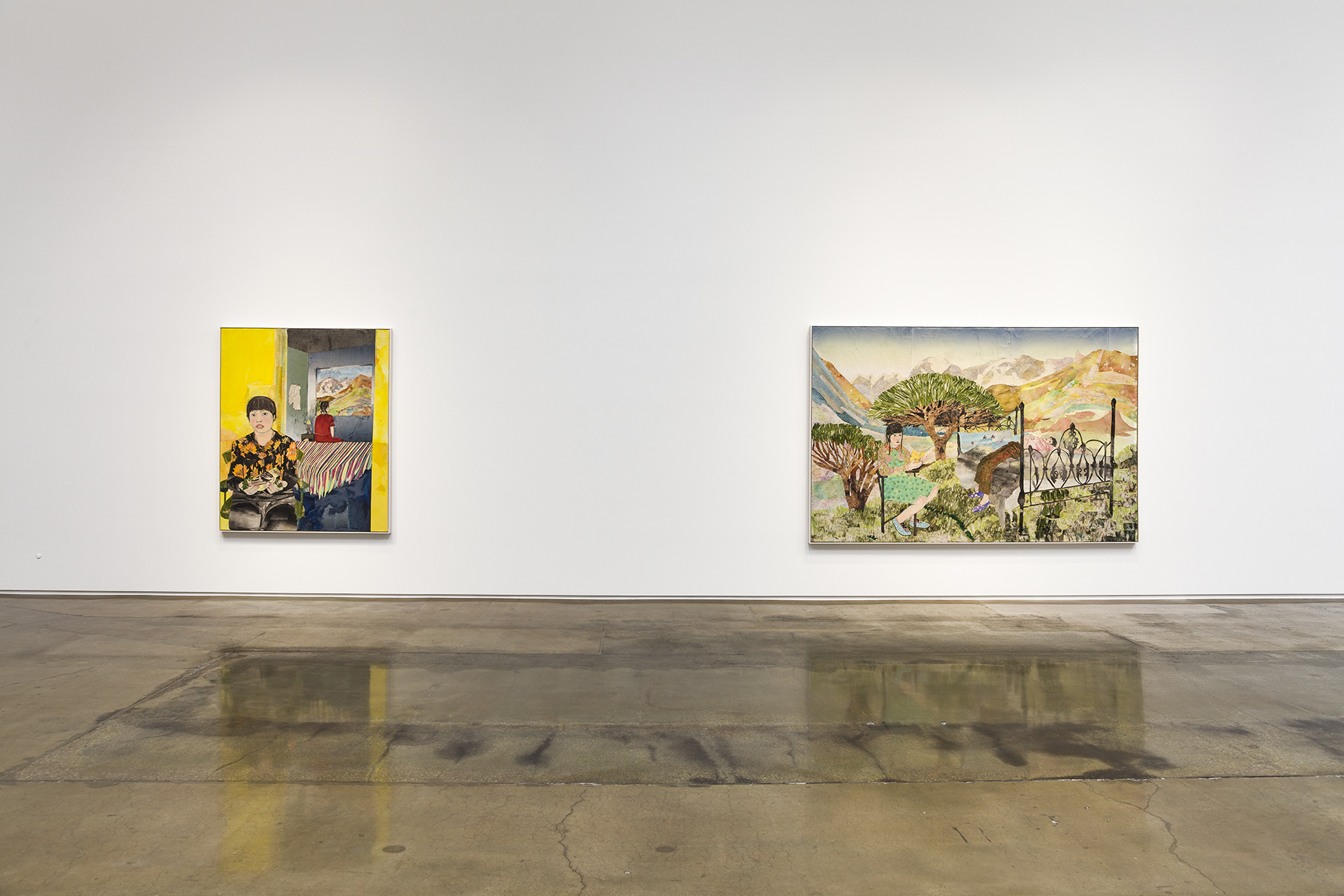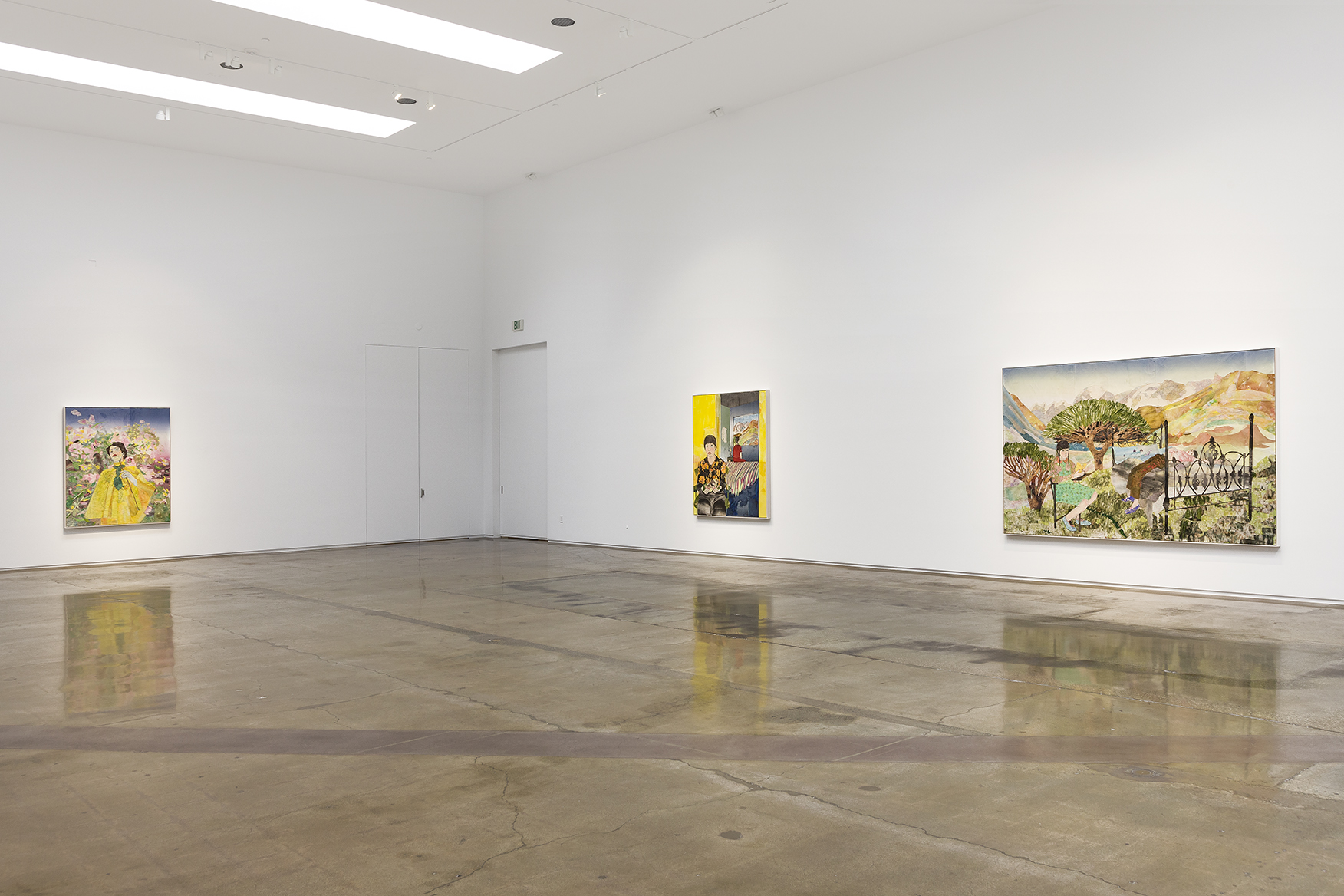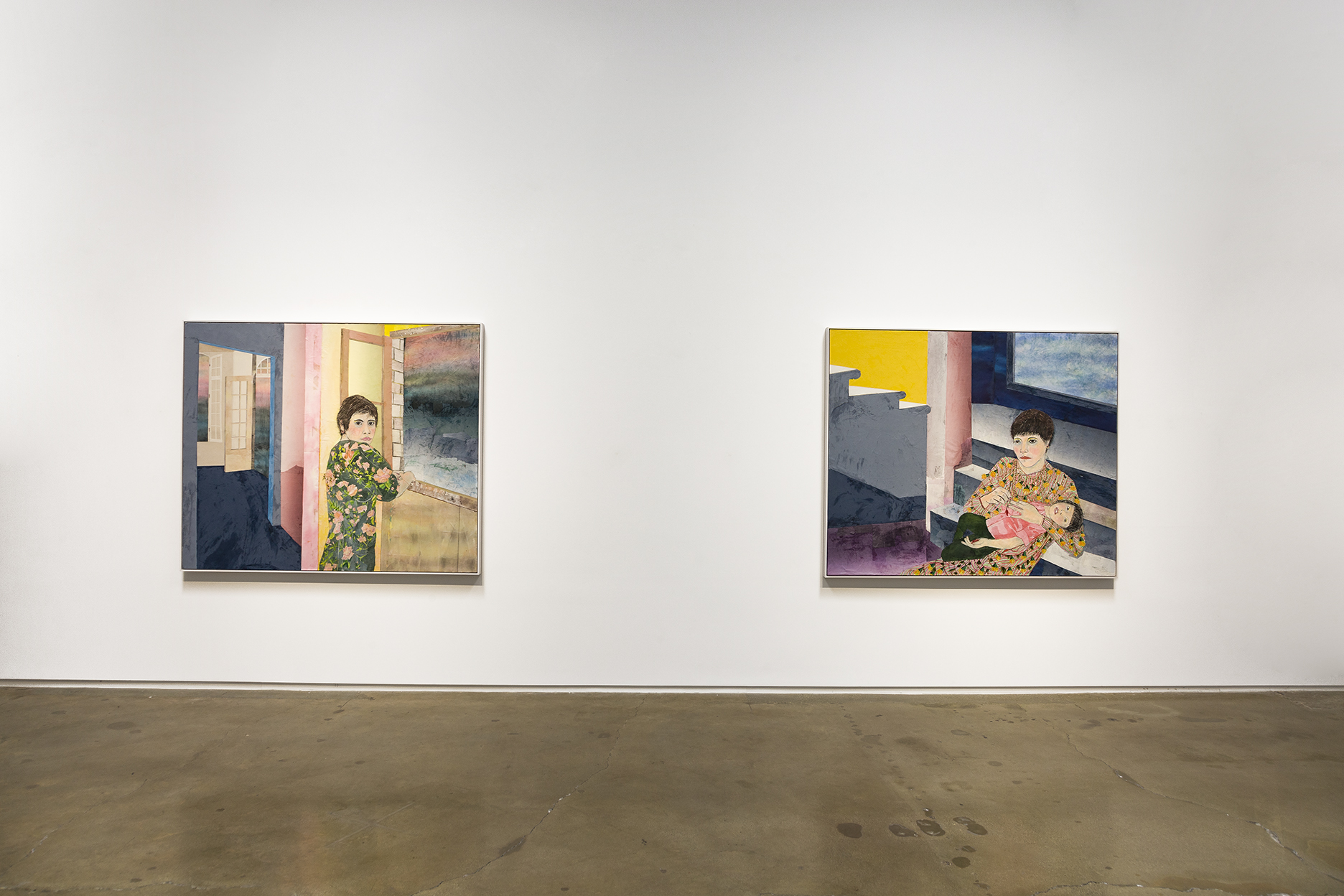MARÍA BERRÍO

“I make art because I can’t imagine myself doing anything else. It’s a joy and a pleasure to create, but it’s also a compulsion.”
Interview by Amanda Quinn Olivar, Editor
María Berrío (b. 1982) was born and raised in Bogotá, Colombia, and spent much of her childhood living on her family’s mountainside farm where she developed a unique and lasting connection to nature. At eighteen Berrío relocated to New York and received her BFA at Parsons School of Design in 2004, followed by her MFA at the School of Visual Arts in 2007. Berrío’s work resides in the permanent collections of the Whitney Museum of American Art, New York, NY; Nasher Museum of Art at Duke University, Durham, NC; Pérez Art Museum, Miami, FL; Crystal Bridges Museum of American Art, Bentonville, AR; Princeton University Art Museum, Princeton, NJ; Ford Foundation Center for Social Justice, New York, NY; among others.
Berrío has recently been included in institutional exhibitions at the Nasher Museum of Art at Duke University, Durham, NC (2018); Weatherspoon Museum of Art at the University of North Carolina, Greensboro, NC (2017); and El Museo del Barrio, New York, NY (2015).
Berrío has also been the recipient of several awards, residencies, and fellowships, including 2018 NYFA Fellowship in Painting, Brooklyn, NY (2018); United States Artists Award nominee, USA (2017); Smack Mellon Studio Program, Brooklyn, NY (2017); Sharpe Walentas Studio Program, Brooklyn, NY (2016); Elizabeth Foundation for the Arts, New York, NY (2014); Chachama New York City, New York, NY (2013); Colectivo Puebla, Puebla, Mexico (2012).
Amanda Quinn Olivar: To begin with... why do you make art?
María Berrío: I make art first and foremost because I can’t imagine myself doing anything else. It’s a joy and a pleasure to create, but it’s also a compulsion; I begin to feel anxious if I’ve been away from painting for too long. If tomorrow everyone decides they are bored silly by the things I make and have moved on, I’ll still continue to make art. It is my own attempt to unveil the mysteries and beauty of our world, to explore and touch the unseen.
Amanda: Did your upbringing and early life in Bogotá, Colombia influence the direction of your work?
María: Yes, absolutely. It’s been eighteen years since I lived in Colombia and I'm still mining my childhood memories in my art. There was a lot of political and social upheaval in Bogotá when I was growing up. For our safety we lived very small and sheltered lives and escaped to our country farm on the weekends. Out in nature, I was able to play freely and let my imagination roam. The nature scenes in my collages are inspired by those experiences.
María Berrío, The Dream of Flight, 2019, collage with Japanese paper and watercolor paint, 60 x 72 inches. Courtesy the artist and Kohn Gallery.
María Berrío, The Dream of Flight (detail), 2019, collage with Japanese paper and watercolor paint, 60 x 72 inches. Courtesy the artist and Kohn Gallery.
Amanda: Is there a philosophy behind your practice?
María: My philosophy is to create beauty and show that out of chaos, hope can rise. Beauty can make challenging ideas not only more pleasing to behold, but also more easily understood and accepted. My work grapples with the ambiguous and unknowable aspects of life. I hope that the beauty in the work allows you to see the beauty in the difficult and gives you a reason to try, a reason to live.
Amanda: The title of your first solo exhibition in Los Angeles at Kohn Gallery is A Cloud’s Roots. What does the title mean, and how is it referenced in the work on view?
María: The title comes from one of the works in the show. It features a dragon’s blood tree, a species found only on an island off Yemen. The dragon’s blood tree has adapted perfectly to the island’s desert-like climate and rocky soil, which is inhospitable to most other plants. For me, it’s a powerful symbol of survival and resilience, as it’s able to put down roots in the most unlikely places. Its branches also look root-like, as if it were flipped upside down, with the roots anchoring themselves in a hovering cloud. The two figures in the collage also have to adapt to impossible circumstances. They too have the power to put down roots wherever they go, even in the skies above. I expand on this idea further in the series so this seemed like a good title for the exhibition.
María Berrío, A Cloud’s Roots, 2018, collage with Japanese papers and watercolor paint, 80 x 96 inches. Courtesy the artist and Kohn Gallery.
María Berrío, A Cloud’s Roots (detail), 2018, collage with Japanese papers and watercolor paint, 80 x 96 inches. Courtesy the artist and Kohn Gallery.
Amanda: How do South American folktales and symbolism play into your subject matter... and what draws you to emphasize your main characters?
María: I’m interested in South American folktales and symbolism because they are created by people seeking order, meaning, and hope. I appreciate these stories as utterly human attempts to understand life and create meaning. The people in my paintings embody a fusion of the many rituals, practices, and origin myths I have come across in my research. I use subtle visual cues, such as body language and clothing, to imbue my characters with otherworldliness and magic.
Amanda: You’re known for large, detailed, and colorful multi-layered mixed media collages on canvas. What is the significance of material and color?
María: I started making collage because painting was so frustrating. I was never particularly good at it, nor was I ever quite satisfied while doing it. I’m too messy. One time, I unwisely placed a glass of water next to my glass of turpentine, and ended up taking a sizable gulp of the latter. Collage suits my impatience and my messiness perfectly, and I’ve never mistaken a gallon of glue for a drink. I do tend to get glue on everything, though. You should see my cell phone. Not so lovely.
I was in graduate school when I made my first collage. I was drawing patterns inspired by wallpaper and fabric samples when I discovered the world of Japanese paper, with its range of patterns and textures. Learning how to collage these papers was challenging at first because I had to contend with an endless number of possibilities. I learned new ways of thinking and seeing. With each series, my goal is to discover more solutions to the technique. My new work relies less on premade patterned paper, as I realized I needed more than what I could gain from preexisting patterns. So now I make my own patterns from hand-dyed paper, the color of which is really important for the kind of mood I want to evoke.
María Berrío, Flower Mirror Water Moon, 2019, collage with Japanese paper and water color paint, 72 x 60 inches. Courtesy the artist and Kohn Gallery.
María Berrío, Flower Mirror Water Moon (detail), 2019, collage with Japanese paper and water color paint, 72 x 60 inches. Courtesy the artist and Kohn Gallery.
Amanda: Was there a specific moment or impetus that inspired this series?
María: During the past few years, as we’ve seen a global rise in nationalism and xenophobia, I’ve been making work about place and migration. The imagined people in my paintings are displaced and are seen in transition and uncertainty. Anemochory (2019) from the Kohn Gallery show is named for the scientific term that describes the dispersal of plant seeds by wind. Certain plants, such as the dandelion, have winged seeds that are evolved to take flight. The seed is able to travel to diverse gene pools, but without agency or control. The figures in the collage also lack control. They bide their time and wait for the unknown to decide their fate. And while the natural world has evolved to promote biodiversity and the comingling of different species, humankind has been more fearful of “the other” and has sought to keep us separated. The fate of the figures is thus less certain than the fate of a seed, and yet the flowers growing on the bed suggest that nature will win in the end.
María Berrío, Anemochory, 2019, collage with Japanese paper and watercolor paint, 77 x 120 inches. Courtesy the artist and Kohn Gallery.
Amanda: Is there a story behind A Universe of One (2018)? What was on your mind when you started it? Can you briefly explain the evolution of your process... from conception to end?
María: I start each collage with a sketch, which inevitably changes as the piece progresses. It starts out abstract, and over time, I build up the image layer by layer. I add to the topography of the canvas piece by piece so the surface is no longer flat but totally alive. By the end, hundreds of layers of paper are woven together into a coherent piece. For A Universe of One, I was thinking about woman’s power and resilience. She’s totally in command of herself and her surroundings.
María Berrío, A Universe of One, 2018, collage with Japanese paper and watercolor paint on canvas, 72 x 60 inches. Courtesy the artist and Kohn Gallery.
Amanda: What is most important to you about the visual experiences you create? Are you painting a world of your hopes and dreams? Your memories? Or both?
María: I create richly textured work that requires and rewards close looking. In a world of endless distractions and ever shortening attention spans, I aim to pull a viewer in completely. I work on a large scale so the materiality of the pieces is all-encompassing and people can absorb every detail of the worlds I create. It is the artist’s job to take humble materials and make the whole greater than the sum of its parts. I do this, not by hiding the physical properties of the materials, but by reveling in them as I transform them. The paintings are a fusion of fantasy, memory, dream, and reality.
Amanda: Please relate a memory that changed your life.
María: My grandmother was a devout Catholic and the mysticism of her religion was very present in her life. She had a huge velvet painting of Jesus dying on the cross in her living room. It was as big as some of my largest canvases. I think about that painting a lot. What does it mean to live with that kind of imagery... how does it change you? She used all kinds of vivid symbols and language to teach me about religion and life in general. I think exposure to this kind of magical thinking gave me the liberty to use symbols and tell stories in my work.
The day I moved to NYC is another, and one that changed my life profoundly. I was a freshman at Parsons, and took a shuttle from JFK to the dorms. As the shuttle snaked through the city, I thought every stop was my own. At each stop, I couldn’t help but feel my own excitement, awe, anxiety, fear, and intense sense of liberation. When it was actually my stop, I distinctly remember telling myself that this was my new life, that I must erase all expectations and be prepared for whatever adventures unfolded. This city’s influence on who I am as a person and on the art I create is impossible to overstate.
María Berrío, The Paradise of Others, 2019, collage with Japanese paper and watercolor paint on canvas, 92 x 118 inches. Courtesy the artist and Kohn Gallery.
Amanda: What’s next?
María: I made my first mosaics for a subway station in Brooklyn and I would like to make more. Mosaic translates my collage technique really well, and it’s been great to work alongside the talented fabricators at Mosaika. I usually work by myself so the opportunity to collaborate with a workshop has been refreshing. I’m also interested in making tapestries, which would be another great opportunity to collaborate with fabricators. At present, I’ve begun to work on a new series for a solo show for next year, as well as a few other opportunities. It’s an exciting time in my career, one that I’m incredibly humbled and grateful for. There have been many people who’ve helped along the way and without them, I never would’ve gotten to this point.
Amanda: What is your favorite art accident?
María: It’s hard to choose. With nearly all of my work, I start with an idea of what I want and quickly sketch out on canvas a rudimentary plan. During the process of making a piece, that sketch undergoes a series of changes, sometimes minor, sometimes drastic. Figures and animals come and go, colors and outfits change. I learned long ago not to become too attached to anything I create; I might spend weeks on a single aspect of a work, step back, realize it doesn’t quite fit in the rest of the composition, and tear it away or bury it under a new layer of paper. In the process, a lot of things that were partially torn away might look right in the piece, or the sketch that I originally intended to flesh out looks better left to its own devices. I like my art to capture the process of creation in addition to being a presentable, final product.
Installation views of María Berrío, A Cloud’s Root at Kohn Gallery, Los Angeles, June 1 — August 24, 2019. Photos by Karl Puchlik. All images courtesy of the artist and Kohn Gallery.
María Berrío in her studio. Photograph by Brad Ogbonna. Courtesy the artist and Kohn Gallery.
Installation views of María Berrío, A Cloud’s Root at Kohn Gallery, Los Angeles, June 1 — August 24, 2019. Photos by Karl Puchlik. All images courtesy of the artist and Kohn Gallery.
Featured Portrait by Brad Ogbonna






